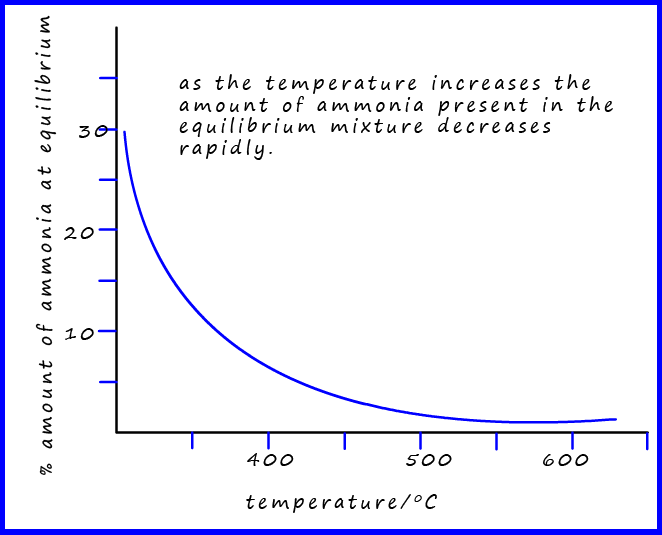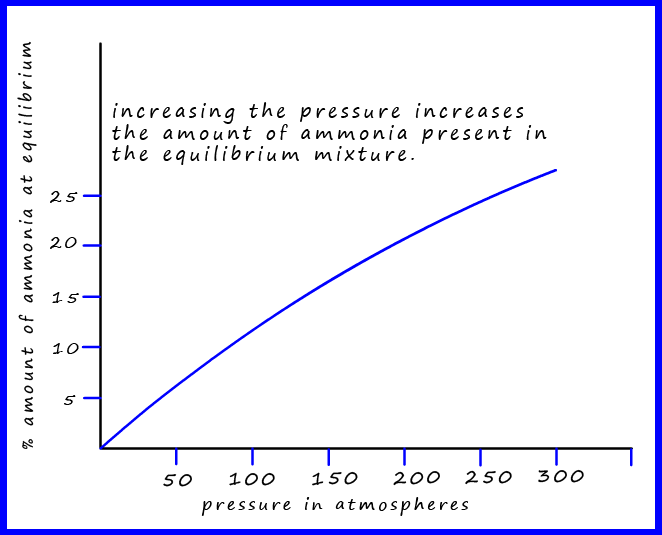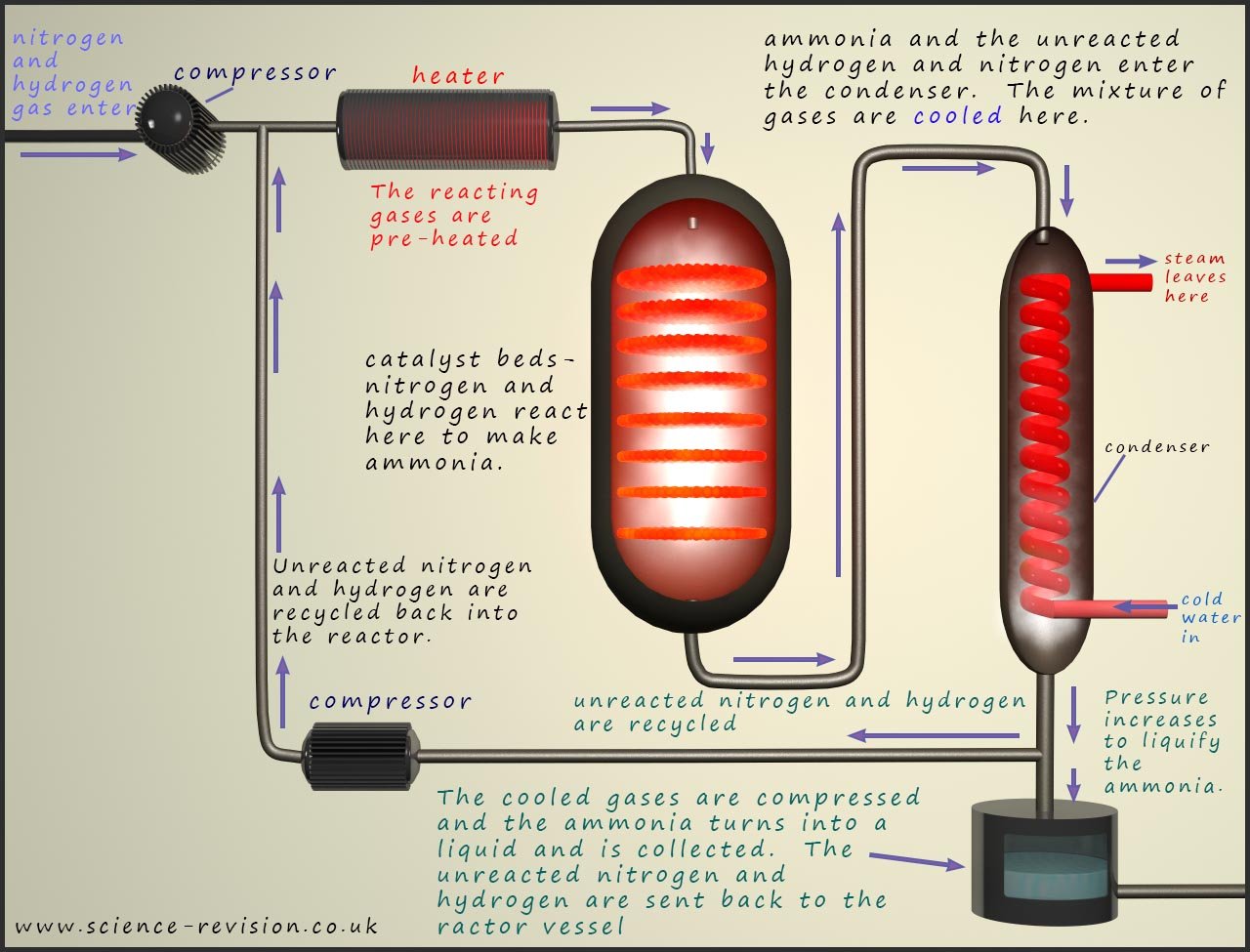
Chemistry only
 Fritz Haber (1868-1934) and Carl Bosch (1874-1940) developed a process to synthesis the gas ammonia. Now
ammonia is a colourless gas with a choking and distinctive smell which makes it immediately recognizable.
It is a simple molecule made up of only one nitrogen atom and three hydrogen atoms; its molecular formula is NH3. Ammonia is a very important gas simply because it it needed to manufacture fertilisers. The availability of synthetic fertilisers made it possible to increase soil fertility which in turn lead to an increase in crop yields and dramatically increased the amount of food available in the global food market. For their work in the synthesis of ammonia both Haber and Bosch were awarded the Nobel prize in chemistry.
Fritz Haber (1868-1934) and Carl Bosch (1874-1940) developed a process to synthesis the gas ammonia. Now
ammonia is a colourless gas with a choking and distinctive smell which makes it immediately recognizable.
It is a simple molecule made up of only one nitrogen atom and three hydrogen atoms; its molecular formula is NH3. Ammonia is a very important gas simply because it it needed to manufacture fertilisers. The availability of synthetic fertilisers made it possible to increase soil fertility which in turn lead to an increase in crop yields and dramatically increased the amount of food available in the global food market. For their work in the synthesis of ammonia both Haber and Bosch were awarded the Nobel prize in chemistry.

Ammonia is an excellent base, it is very very soluble in water where it dissolves to form the weak alkali ammonium hydroxide:
Ammonia gas is easy to liquefy, this is done by simply compressing gaseous ammonia or by cooling it down to -330C (its boiling point). Ammonia is manufactured on a large scale in the UK using the method developed by Fritz Haber and Carl Bosch. The main use of ammonia is in the manufacture of fertilisers, indeed a significant portion of the world's food production depends on the use of fertilizers produced by the Haber-Bosch process. Ammonia is also used in the manufacture of explosives, for example ammonia is used in the production of ammonium nitrate (NH4NO3), which is a widely used ingredient in certain types of explosives.
In industry ammonia is made on a large scale using the process devised by the German chemist
Fritz Haber in 1909.
Being a small and simple molecule it may appear at first glance that
making ammonia (NH3) would be straightforward, simply
react nitrogen gas (N2) and
hydrogen gas (H2) together to make ammonia (NH3). However there are a number of problems
that need to be overcome before large amounts of ammonia can be made.
1. Large amounts of hydrogen gas will be needed. The
hydrogen is obtained by reacting methane (CH4) or natural gas with
steam using a nickel catalyst. This reaction is often referred to as steam-reforming:
 Perhaps the first point to note from this equation is that the reaction is reversible. Under normal lab conditions
nitrogen and hydrogen
will react to produce an equilibrium mixture which contains very little ammonia. The
main reason for this is the fact that nitrogen
is a particularly unreactive gas. Each
nitrogen molecule is held together by a triple covalent bond which requires a large amount
of energy to be broken. This triple covalent bond results in a
very high activation energy for the reaction and so under lab conditions
there is not enough energy to break many of these triple bonds so the
reaction is very slow.
Perhaps the first point to note from this equation is that the reaction is reversible. Under normal lab conditions
nitrogen and hydrogen
will react to produce an equilibrium mixture which contains very little ammonia. The
main reason for this is the fact that nitrogen
is a particularly unreactive gas. Each
nitrogen molecule is held together by a triple covalent bond which requires a large amount
of energy to be broken. This triple covalent bond results in a
very high activation energy for the reaction and so under lab conditions
there is not enough energy to break many of these triple bonds so the
reaction is very slow.
The Haber process uses a catalyst to
help lower the activation energy and to break this triple covalent bond and
get the reaction going at a reasonable rate. However in
order to have any ammonia to sell and make a profit there are a number of other
factors you need to think about before setting up a chemical
plant to manufacture ammonia.
 As a manager of a chemical plant producing ammonia there are a number of
factors you need to think about in order to produce a
reasonable amount of ammonia to sell for a profit at the end of the day.
Consider the reversible reaction for the formation of ammonia given below:
As a manager of a chemical plant producing ammonia there are a number of
factors you need to think about in order to produce a
reasonable amount of ammonia to sell for a profit at the end of the day.
Consider the reversible reaction for the formation of ammonia given below:
The answer is to use a compromise temperature. That is a temperature that will produce a reasonable yield of ammonia in a reasonable time. A temperature of around 4500C is usually used in the Haber process as a compromise temperature. The graph opposite shows that as the temperature increases the amount of ammonia present in the equilibrium mixture decreases. However even with the use of a compromise temperature most of the nitrogen and hydrogen are still unreacted and little ammonia is produced. So what else can be done to try and increase the amount of ammonia in the equilibrium mixture? Well if you look at the equation for the Haber process you will see that there are 4 moles of gas on the reactants side and only 2 moles of gas on the product side of the equation:
 So again using Le Chatelier's principle we can alter the amount of reactants and products in the equilibrium mixture by
changing the pressure. If we increase the pressure
then the system (the reacting chemicals) will respond by attempting to
lower the pressure, this can be done by forcing the
position of equilibrium to the side of the equation with the least
number of moles of gas present. That is the product side.
So we can say that the higher the pressure the more
ammonia will be present
in the equilibrium mixture.
So again using Le Chatelier's principle we can alter the amount of reactants and products in the equilibrium mixture by
changing the pressure. If we increase the pressure
then the system (the reacting chemicals) will respond by attempting to
lower the pressure, this can be done by forcing the
position of equilibrium to the side of the equation with the least
number of moles of gas present. That is the product side.
So we can say that the higher the pressure the more
ammonia will be present
in the equilibrium mixture.
The catalyst.
A catalyst is necessary in the Haber process to
speed up the reaction. A catalyst will have no effect on the
position of
equilibrium or alter the amounts of reactant or product at equilibrium. The
catalyst will however speed up the reaction
rate considerably. The catalyst used in the Haber process is an
activated iron catalyst. It works most efficiently
around 4000C.
A simplified outline of the Haber process is shown in the image below:

The nitrogen and hydrogen
are mixed in the ratio of 3:1, just as in the equation for the Haber process. These gases
are then compressed to as high a pressure as is economically viable for
the plant, normally around 200 atmospheres. The mixture of
gases are then pre-heated before they enter the reactor
at around 4500C. On the surface of the
iron catalyst the gases
react and around 15% yield of ammonia is produced, however about 85% of the
nitrogen and
hydrogen gases are unreacted.
Once the gases leave the reactor they enter a condenser (cooler). At
this point there is a mixture of ammonia and
unreacted nitrogen and hydrogen.
The ammonia present will easily liquefy under pressure
after leaving the cooler. It will
then be stored in a separate refrigeration vessel. The unreacted nitrogen
and hydrogen gases are then recycled back
through the reactor again. With continual recycling of the nitrogen
and hydrogen up to 98% of it can be turned into
ammonia. The diagram below shows a schematic representation of how the ammonia is produced in the Haber-Bosch process.

